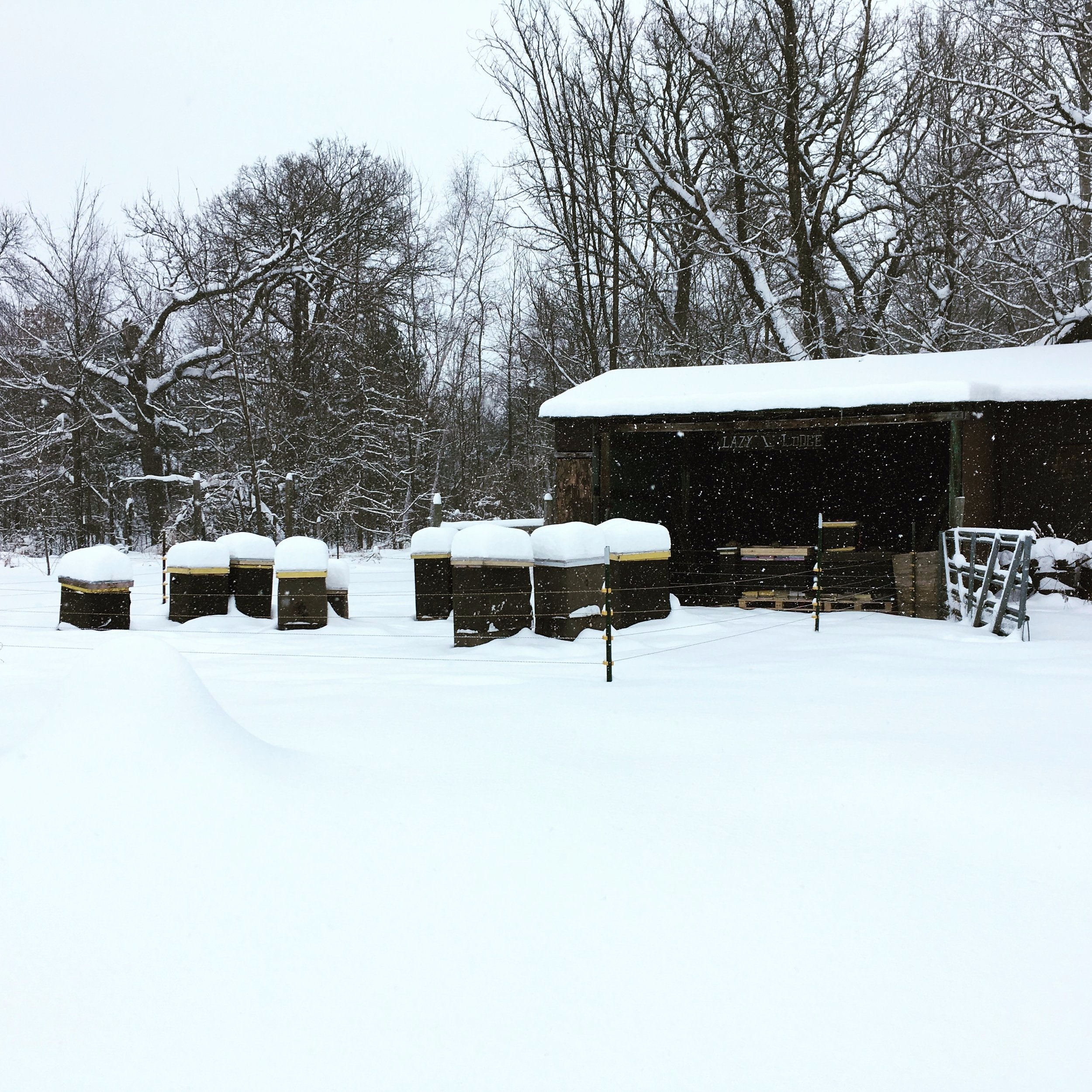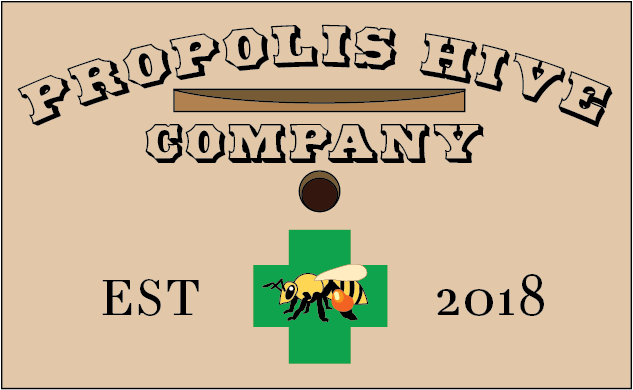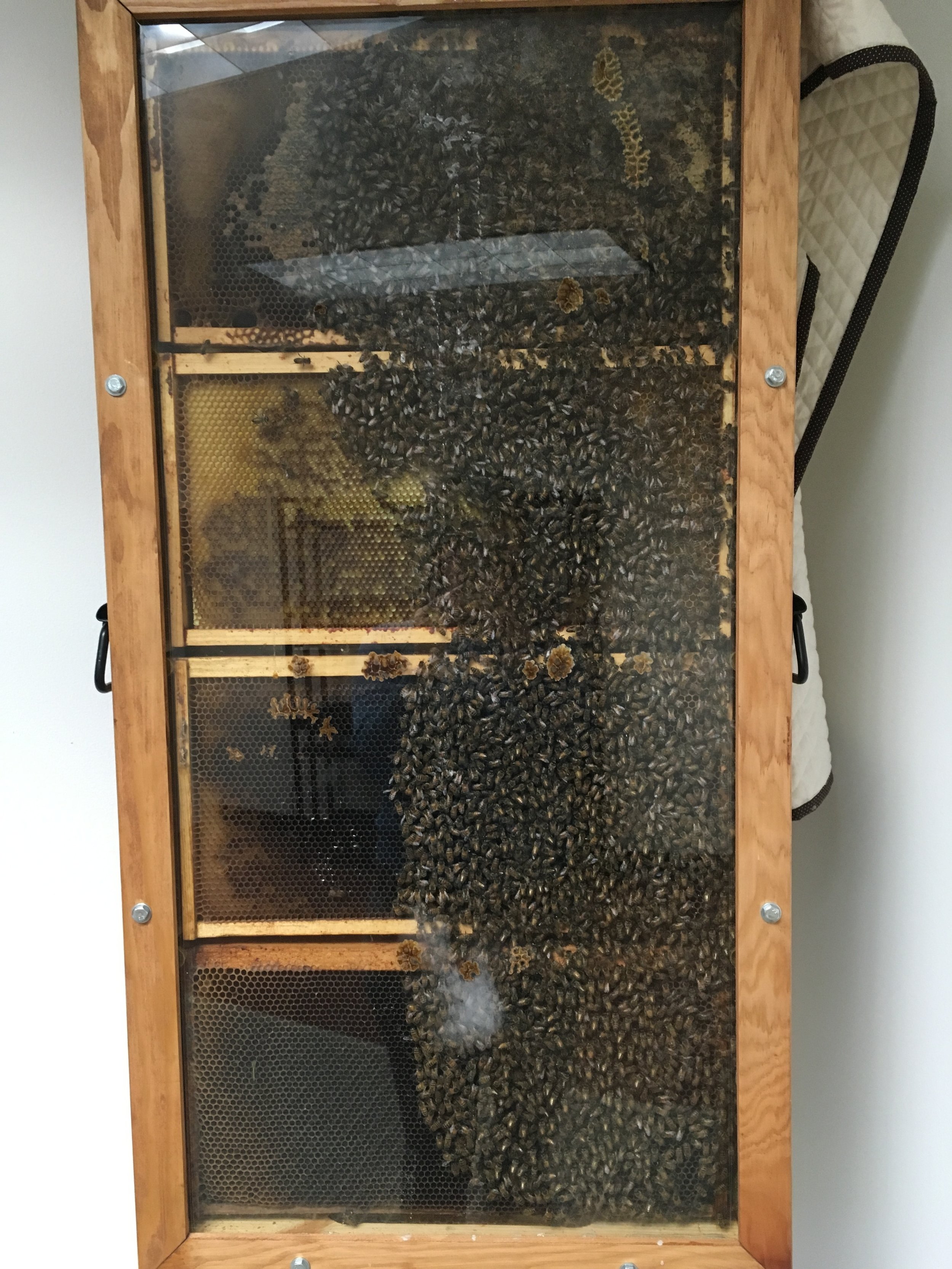What should I bee doing in February 2019
Know your enemy, Tools in your toolbox and is it spring yet?
Who is tired of cold and snow? As we slowly make it passed the half way point of the shortest month of the year, why does it always feel like the longest?! In reading last month’s blog entry, the weather could not be more different since then. The Polar Vortex happened, which was a new experience for me as a non-migratory beekeeper. I lost sleep in my cozy home worrying about my bees and my “drone-fed” chickens. My poor poor Roufus, the Rooster suffered severe frostbite and I am afraid he will loose his comb. He will look like the hen I thought he was when he was a little pullet. Now, what he lacks in a head piece and wattle he will make up for as an adult with his big beautiful tail feathers and spurs. We are also experiencing the snowiest February on record. Compare the Jan. photo of my beeyard with the one from this month. I wish I had some snowshoes!
Any bees that were weak before the vortex, perished with the extreme cold. I saw an image in a book called “OTS Queen Rearing” by Mel Disselkoen. He had a picture of a bunch of bees with little red circles where mites may bite into the bees. The author, called them “wounded workers.” Death by a thousand cuts is how I think of it. Imagine the wounds on the bees from the mites sharp mouth leaving open sores, weakening their little bodies and ability to fight virus spread by the bees before winter when they need the most strength. For many years, the science community thought mites were sucking blood but it was revealed last year, by Dr. Samuel Ramsey that mites feed on the underside of the bee, sucking out fat bodies inside the bees while releasing an enzyme that continues to break down the fat bodies even after the mites moves to another one. Fat bodies of bees, function a lot like the human liver. According to Ramsey, the fat bodies in the bees are responsible for the following crucial functions:
Growth and metamorphosis-when the larva changes to pupa, fat bodies are necessary
Storage of energy and nutrient mobilization
Pesticide detox
Immune function
Temperature regulation
Protein and fat synthesis-so if you feed pollen sub to a bee that has had a lot of fat body sucked out, they are not able to process and therefore benefit from that supplement
Vitellogenesis-vitellogen is a protein that helps winter bees live through long winters
I highly recommend you sit down with this video (linked here) to understand how the mite works. Know your enemy. These nasty little parasites are enemy numero uno. We should be using every tool in our toolbox to help our bees stay strong all year long. And remember, JUST BECAUSE YOU CANT PHYSICALLY SEE THE MITES ON THE BEES DOES NOT MEAN THEY ARE NOT THERE! They hide underneath the bee. If you see them on the backs of the bee it means they are done feeding on one and looking for another bee to take a fat body bite out of.
And what are the bees doing in February?
So, in my opinion, doing your best to understand what the bees are doing at a particular time of year, really helps the beekeeper. So from now on with this blog, I will start with what the bees are doing. Today is the 17th of February. In 2016, the temperature got up to 60F on Feb. 21st. Because of this, the bees were already collecting pollen in some areas. Obviously, this is not the case in 2019. Not only are we having the snowiest month, we are below average in temps. However, the position of the sun and the extension of daylight, can trigger the queen to start laying a small patch of brood in anticipation of spring. The colder than average temps may delay this process but I did observe a little brood in the colonies that have already perished. Rearing brood requires more resources and a certain temperature in the hive so the bees will start to work harder and dig into those resources. We are about 10 days till March and Hutty did mention an early spring warm up, so cross your fingers for that! Anyways, the next 2 months are the time when bees really start to dig into their winter stores. I have included another pic of the observation hive I keep at El Centro in Minneapolis. That pic was taken just a few days ago. I did not see any brood in the colony but that hive has 8 frames and I am not able to see what is happening between the frames. My guess is that is where the queen is hiding and if there is brood started, between the frames is the warmest spot. Interestingly, there is a little tray at the bottom of the hive with a screen where mites and other hive debris fall below. Once a month, i have been cleaning the mites out of the bottom of the tray and counting. In December, I counted 15, in Jan. it was 12, and this month 12 again. I can also see that they still have honey in the hive. If you compare it to the photo in my Jan. post, the number of bees looks similar. Pretty neat, huh?
And what should the beekeeper be doing in February?
Knowing that the weather could change back to cold for who knows how long, after the vortex, I went out to check losses and add food supplies to those that needed it. There was only one 2-3 day window for these checks in the first weekend of February when the weather would be above freezing. The 2nd picture in the line up comes from an infrared camera. Super fun technology to play around with. The photo was taken on Feb.2nd at the Inver Grove Heights teaching yard. Between all 3 teaching sites, 2 at Inver Grove and 1 at Fridley, we only lost 3 hives. In the photo, even though all the boxes do not show the red/white color, all of the hives were alive (hard to pick up with camera and fit all the hives in the shot). So far, my overall total losses from 100 teaching and production hives are at around 28%. For the most part, the ones that died were not a surprise for me except for one yard where I had some nucs packed together. They all seemed up to weight and healthy in the fall and were alive before the vortex. When I went to check after the cold, 5 out of the 7 were quiet. Because they were all wrapped together, i could not break them apart and risk losing the other two to assess what happened. I will keep you posted when I am able to look at them.
So, in February, the beekeeper should be researching, prepping equipment for next year, assessing bee survival and food stores(only by lifting the back of the colony or taking a quick peak if it is above freezing). Remember that I have 100 hives and you may only have a few. If you took care of mites last year, left them with enough food, put mouse guards on and have them wrapped and protected from the wind, your bees should make it just fine. And I know you will worry anyway, but try not to. Spring will be here soon and the bees will return to your boxes one way or another.
Speaking of equipment, I want to make an announcement that some of you already know. I am super excited to be working with the owner of a brand new company called “Propolis Hive Company”. Christian Dahm featured in the photo below, is a former US Marine now beekeeper and sawyer from near Moose Lake, MN. He has worked at the U of MN bee lab and keeps his own hives, and has developed a patten pending propolis hive body from wood that he sustainably harvests from his land. I went for a visit to see his operation. Check out the size of those white pines he is standing in front of!
What does that mean and why propolis? He roughs up the inside of the box using a special technique, encouraging bees to build a propolis envelope. According to research done at the University of MN which I helped assist with as a lab tech in 2014 (click here) and more done at University of Georgia (click here), propolis acts as a antimicrobial layer that helps keep the bees healthy! Starting March 1st, The Beez Kneez Honey House will be the exclusive retailer of these boxes. We are super excited to add another tool to our toolbox in keeping bees healthy by understanding what they do in nature and applying it to our management system. For a great podcast on how bees live in the wild and benefit from propolis, listen to this great interview with one of our favorite bee scientists Dr. Tom Seeley. We will try these out in our own apiaries this summer. Interested? Let me know asap because we only ordered 20 deeps and 6 are already sold! We will also have mediums and nucs available.





